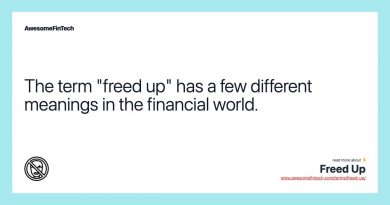Funding Currency What it Means How it Works Example

Funding Currency: What it Means, How it Works, Example
What Is a Funding Currency?
The funding currency is exchanged in a currency carry trade transaction. It typically has a low interest rate compared to the high-yielding currency.
Investors borrow the funding currency and take short positions in it, while simultaneously taking a long position in the high-yielding currency. This allows traders to collect daily interest.
Key Takeaways
– A funding currency refers to the money borrowed in one currency to purchase another currency in a carry trade.
– The funding currency has a low interest rate and is used to finance the purchase of a high-yielding currency.
– A currency carry trade is a strategy that attempts to capture the difference in interest rates between two currencies, which can be substantial when leverage is used.
How a Funding Currency Works
The Japanese yen has historically been popular as a funding currency among forex traders due to low interest rates in Japan. Traders borrow yen and purchase currencies with higher interest rates, such as the Australian dollar or New Zealand dollar. Other funding currencies include the Swiss franc and, in some cases, the U.S. dollar.
During times of high optimism and increasing equity prices, funding currencies underperform as investors are willing to take on more risk. Conversely, during financial crises, investors rush to funding currencies as they are considered safe-haven assets.
For example, before the Great Recession, the Australian dollar and New Zealand dollar appreciated by over 25 percent against the Japanese yen in 12 months. However, when the crisis unfolded, these carry trades were unwound and investors dumped the higher-yielding currencies in favor of the funding currency. Both the Australian dollar and New Zealand dollar lost over 50 percent of their value against the Japanese yen during the recession.
Funding Currencies and Interest Rate Policy
Funding currencies like the Japanese yen often have low interest rates due to aggressive monetary stimulus by their central banks. The Bank of Japan instituted a policy of low interest rates after the bursting of an asset price bubble, and it has lasted till today. Similarly, the Swiss franc has been kept at low interest rates by the Swiss National Bank to prevent excessive appreciation against the euro.
The Currency Carry Trade
Funding currencies play a role in the currency carry trade, a popular forex strategy with large cross-border loans. The carry trade involves buying currency pairs with high interest rate spreads, such as the Australian dollar/Japanese yen and New Zealand dollar/Japanese yen. The choice of currency pairs depends on the yield differential between them.
The major risk in a carry trade is exchange rate uncertainty. If the value of the asset currency falls relative to the funding currency, the trader may suffer losses. Additionally, carry trades are often done with leverage, so even small movements in exchange rates can result in significant losses if the position is not properly hedged.
Cautionary Funding Currency Tales
In the early 2000s, the Japanese yen was a favored carry trade currency due to near-zero interest rates in Japan. However, the yen carry trade unraveled in 2008 as global financial markets crashed, causing the yen to surge nearly 29% against major currencies. This increase made it expensive to pay back the borrowed funding currency and disrupted the currency carry trade market.
The Swiss franc is another popular funding currency, frequently used in the CHF/EUR trade. The Swiss National Bank had kept interest rates low to prevent excessive appreciation of the Swiss franc against the euro. However, in 2015, the SNB suddenly dropped the peg to the euro, causing turmoil in the stock and forex markets.
Currency Carry Trade Example
As an example of a currency carry trade, assume the interest rates in Japan are 0.5 percent, while they are 4 percent in the United States. This represents an expected profit of 3.5 percent, the difference between the rates. The first step is to borrow yen and convert them into dollars. Then, invest the dollars into a security paying the U.S. rate.
If the exchange rate stays the same over the year, the trader’s profit is determined by the difference between the ending U.S. dollar balance and the amount owed. The trader profits more if the exchange rate moves against the funding currency, and may experience losses if the funding currency strengthens.



